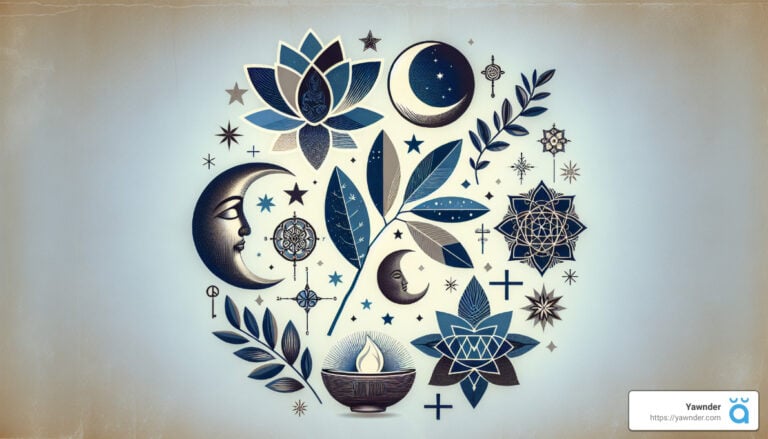Stunning Sleep Gods: Best Insights from World Religions
The Allure of Sleep Gods in Various Religions
The captivating realm of Sleep Gods across world religions offers a unique glimpse into how different cultures have interpreted the nuances of sleep and dreams. These deities not only symbolize the critical nature of rest but also celebrate humanity’s enduring quest to understand the enigmatic beauty of sleep. In this exploration, we’ll uncover seven remarkable sleep deities that highlight diverse cultural beliefs and practices.
Hypnos: The Greek God of Sleep
In Greek mythology, Hypnos stands as a quintessential figure representing the essence of sleep. As the offspring of Nyx (Night) and Erebus (Darkness) and the twin brother of Thanatos (Death), Hypnos embodies a profound connection between slumber and mortality—a recurring motif in Greek philosophy.
Residing in Mythology
Homer describes Hypnos as residing on the island of Lemnos, while Ovid places him in a shadowy cave near the river Lethe, famed for inducing forgetfulness. In this dark sanctuary, Hypnos reclines on a plush couch accompanied by his sons, the Oneiroi, who are tasked with delivering dreams to mortals.
The Role of the Oneiroi
The Oneiroi, integral to the dream realm, perform unique functions:
– Morpheus: Brings dreams featuring human forms.
– Icelus: Conjures dreams with animals.
– Phantasus: Creates visions involving inanimate objects.
Together, these dream-bringers enrich the lore surrounding Hypnos, mirroring the multifaceted nature of dreams themselves.
Somnus: The Roman God of Sleep
Transitioning to Roman mythology, Somnus emerges as the personification of sleep, sharing attributes with his Greek counterpart but representing a distinct essence aligned with Roman ideals.
Characteristics and Symbols
Often depicted as a youthful figure with wings signifying the fleeting nature of sleep, Somnus commonly carries a poppy stem or a horn filled with opium. His dark cave embodies undisturbed rest, similar to that of Hypnos, representing a safe haven for those seeking slumber.
Cultural Practices Involving Somnus
In ancient Roman society, sleep was vital for well-being. Rituals were dedicated to Somnus, invoking his presence for peaceful nights. Offerings of poppies served as a means of seeking his favor, revealing the Romans’ reverence for the nourishing qualities of sleep.
Mamu and Sisig: Mesopotamian Deities of Dreaming
Within Mesopotamian mythology, Mamu and Sisig symbolize the intricate world of dreams and their profound meanings.
Mamu: The Deity of Meaningful Dreams
Mamu, often seen as the daughter of Utu, the sun-god, is revered for conveying significant prophetic dreams, regarded as divine messages.
Sisig: The Dream World Regent
Sisig, or Zaqīqu in Babylonian texts, plays a multifaceted role as the governor of the ethereal dream realm. His ties to the astral body suggest that dreams serve as a pathway for spiritual exploration and profound communication.
Cultural Impact and Rituals
In Mesopotamian culture, beliefs in Mamu and Sisig greatly impacted everyday life. Dream interpretation was a highly valued practice, connecting the human experience with divine messages, illustrating the cultural importance of dreams as prophetic vessels.
Caer Ibormeith: The Celtic Goddess of Dreams
In Irish tradition, Caer Ibormeith emerges as a pivotal figure in dreams and prophecy. Her ability to change forms, notably into a swan, symbolizes grace and enigmatic nature.
Dreams as Divine Messages
Caer facilitates a connection with the divine through dreams, making her a significant figure in ancient Celtic rituals, providing essential guidance through dream interpretation.
Moe‘uhane: Hawaiian Concept of Soul Sleep
The Hawaiian term Moe‘uhane, translating to soul sleep, beautifully intertwines dreams with spiritual communication. This sacred state allows individuals to connect with ancestral guardians known as ‘aumakua.
Dreams as Communication Tools
In Hawaiian belief, dreams serve as conduits for divine guidance and prophetic insight, interpreted by specialists to navigate life’s complexities.
Breksta: Lithuanian Goddess of Twilight and Dreams
Breksta, the Lithuanian goddess of twilight, casts a protective spell over dreams from sunset to sunrise. Her domain governs the magical hours of transition between day and night.
Rituals for Protection
To honor Breksta, people engage in twilight rituals, invoking her guardianship. Such ceremonies during these sacred hours aim to secure blessings for meaningful and insightful dreams.
Shalim: Canaanite God of Dusk
Shalim, the Canaanite deity of dusk, embodies the tranquil moments as day shifts into night, where dreams take flight.
Embodying Peace and Reflection
His realm promotes peace and introspection, encouraging contemplation as the world settles into nighttime serenity. Shalim holds a revered position within Canaanite spirituality, symbolizing the importance of restful slumber.
Conclusion: The Timeless Connection of Sleep Gods
Exploring the Sleep Gods in Various Religions reveals not only their individual stories but also a universal appreciation for the mysteries of sleep. These divine figures continue to shape our understanding of rest, dreams, and the profound link between the spiritual and the human condition.
By delving into the mythologies surrounding these enchanting deities, we can embrace more than the art of sleep; we gain insight into a rich cultural legacy that enhances our nightly rituals. As you embark on your journey towards restful slumber, let the wisdom of these ancient gods inspire your perspective on dreams and the sanctity of rest.



















